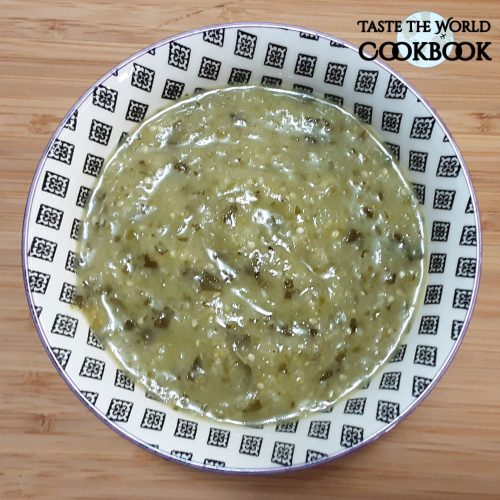Tomatillo Salsa Verde is a wonderful green sauce used in many Mexican and Tex-Mex recipes. Tart tomatillos are roasted and combined with sweet onion, spicy jalapenos, cilantro, and garlic to create a wonderful sauce.
Table of contents
Ways to Make Tomatillo Salsa Verde
In the cuisines of Mexico and the Southwestern United States, it is often served with Mexican or Tex-Mex style dishes like Enchiladas and Taquitos. The version typical of New Mexico consists mostly of green chile rather than tomatillos.
- Pico de Gallo – Known for its vibrant colors and fresh taste, this salsa contains very little liquid. Made with finely chopped tomatoes, onions, serrano peppers, cilantro, lime juice, and salt. Pico de Gallo is a great topping for tacos, quesadillas, and other Latin-inspired dishes.
- Salsa Taquera – The key ingredient in Salsa Taquera “Taco Sauce” is the Chile de Arbol, a thin red chili pepper that is hotter than a jalapeno and gives the salsa its signature spicy kick. This salsa is often used to top tacos, quesadillas, and other Latin-inspired dishes.
- Salsa Roja – In Spanish, Salsa Roja means “Red Sauce” and is a blended red salsa made with tomatoes, ground with onion, garlic, chile, salt, and pepper to taste. It is used to prepare traditional Mexican foods, in a mild spicy level for enchiladas and huevos rancheros, or spicier for antojitos such as tacos and quesadillas.
- Salsa Verde – Salsa Verde is a “Green Sauce” that’s made with tomatillos instead of tomatoes. These small green fruits are native to Mexico and are less sweet and more acidic than tomatoes, which creates a type of salsa with a bright, vegetal flavor. It’s most often used with enchiladas but can also be used with tacos, burritos, tostadas, quesadillas, and any tortilla-based meals.
- Salsa de Aguacate – Tomatillos, serrano peppers, and avocado are pureed to make a smooth topping that’s often served with tacos and grilled meats. This type of salsa balances the refreshing coolness of avocado with the spiciness of serrano peppers. Many people confuse this creamy, green salsa with Guacamole sauce but they are not the same.
- Salsa Criolla – Peruvian Salsa Criolla has a different look than the other types of salsas on our list because it contains sliced red onions instead of chopped onions. To achieve the perfect Salsa Criolla, the onions are thinly sliced, then sprinkled with salt, and lightly massaged. This removes any bitterness or bite from the onions and coaxes out their natural sweetness.
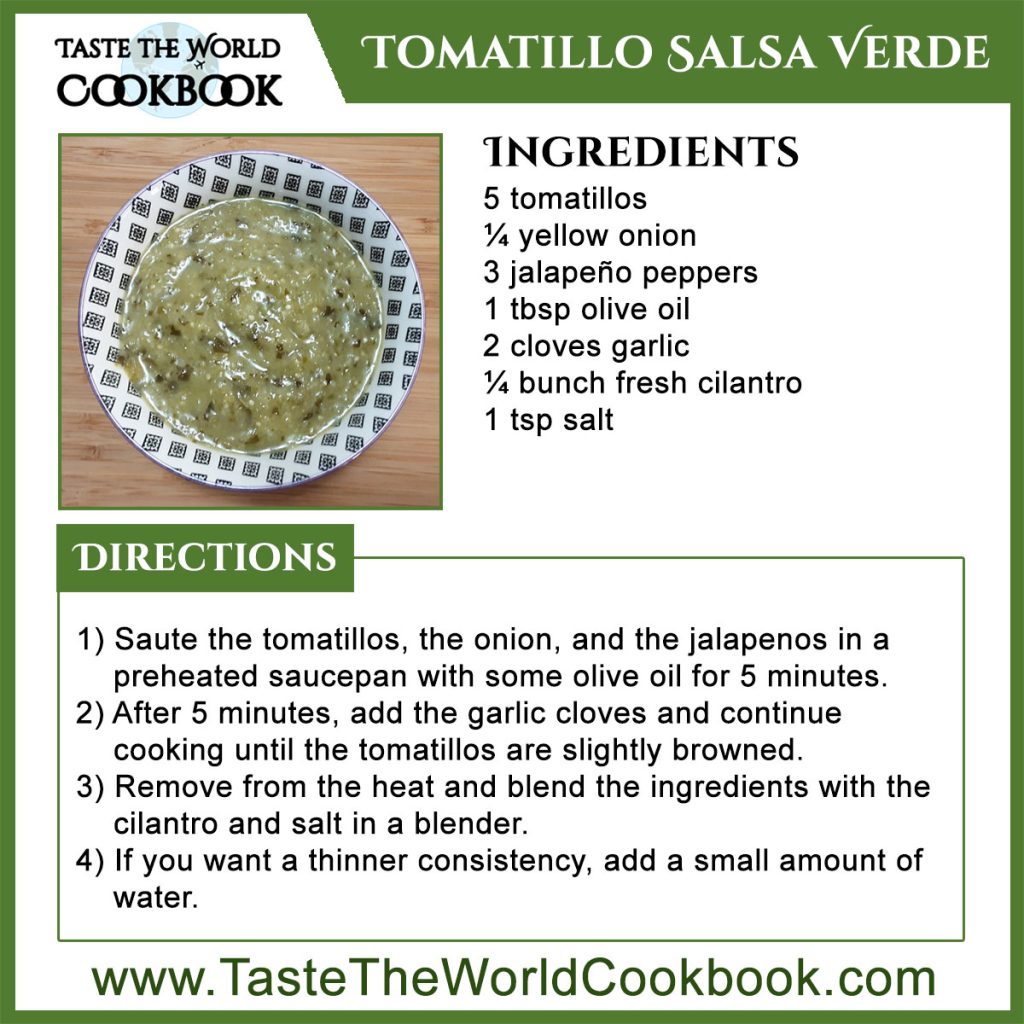
How to Store Green Tomatillo Sauce
Refrigerator: This green tomatillo sauce should be stored in a jar with a lid or any airtight container you have! Keep it chilled in the fridge for up to 4 days. If you see a film start to develop on the top, the salsa is no longer good.
Freezer: Save this fresh tomatillo salsa verde by storing it in an airtight container or in a freezer-safe Ziploc bag. This should keep in the freezer for up to 2 months.
History of Tomatillo Salsa Verde
The tomatillo-based Mexican salsa verde dates to the Aztec Empire, as documented by the Spanish physician Francisco Hernández, and is distinct from the various medieval European parsley-based green sauces.
The City of Texcoco de Mora, Mexico
Texcoco de Mora is a city located in the State of Mexico, 25 km northeast of Mexico City. Texcoco de Mora is the municipal seat of the municipality of Texcoco. In the pre-Hispanic era, this was a major Aztec city on the shores of Lake Texcoco.
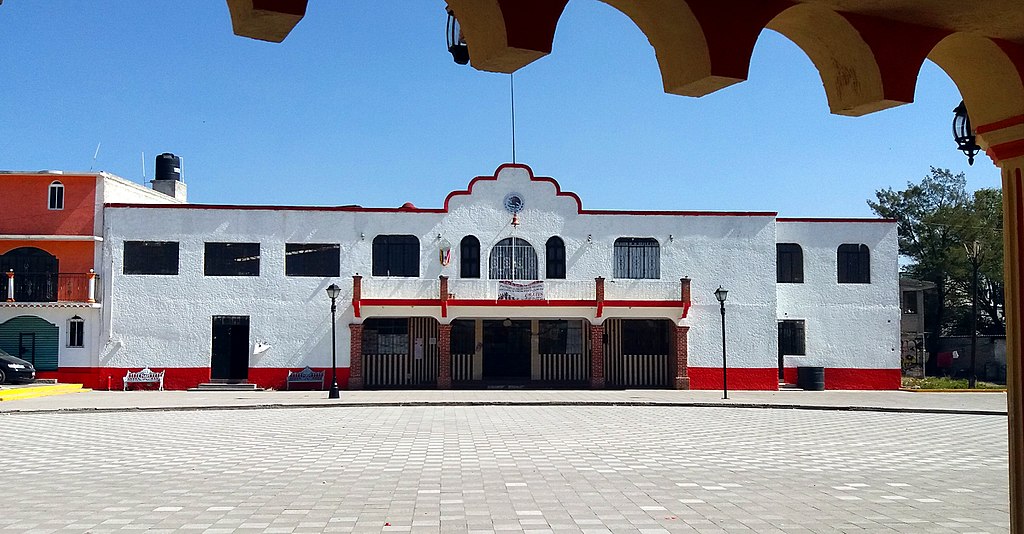
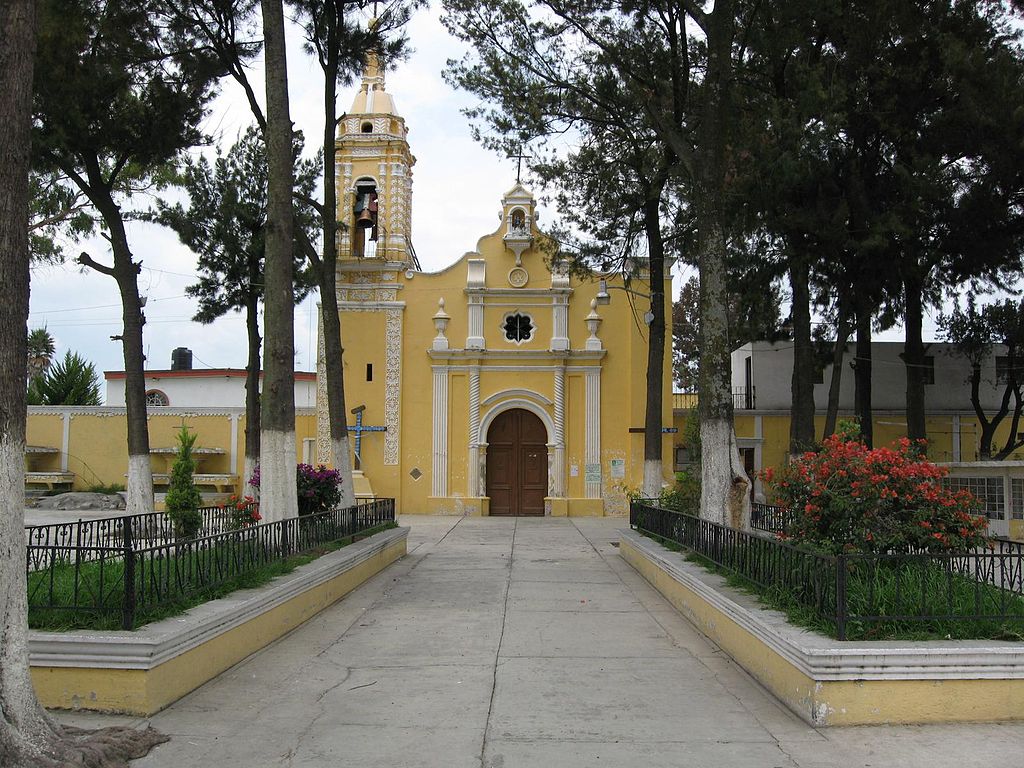
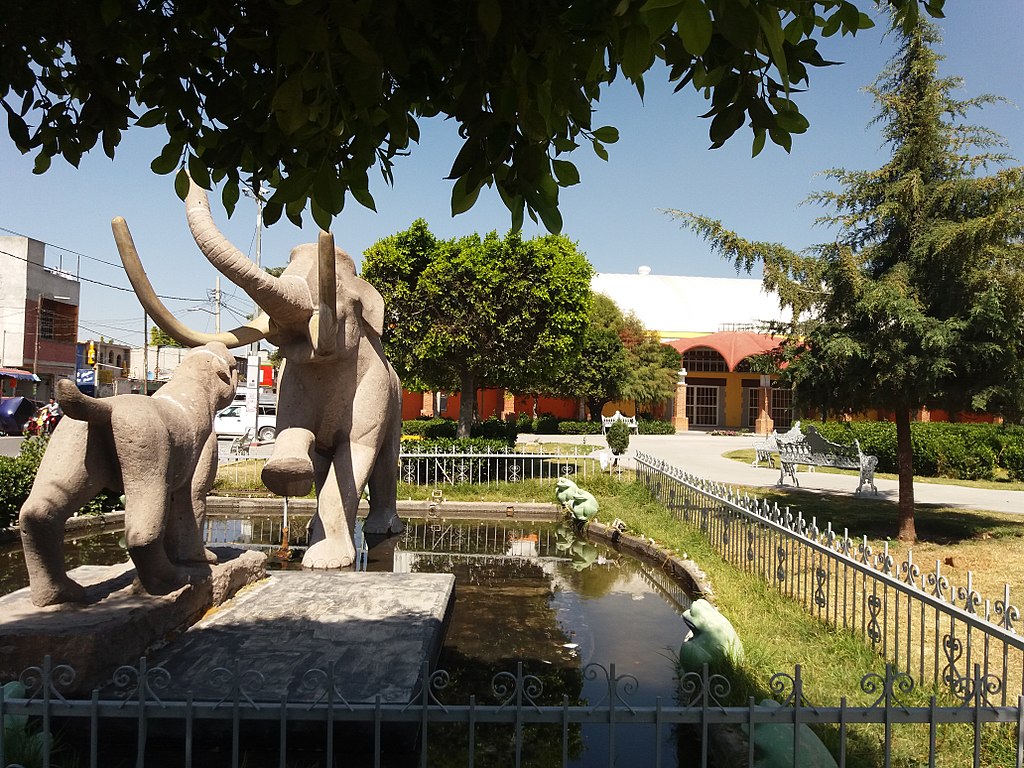
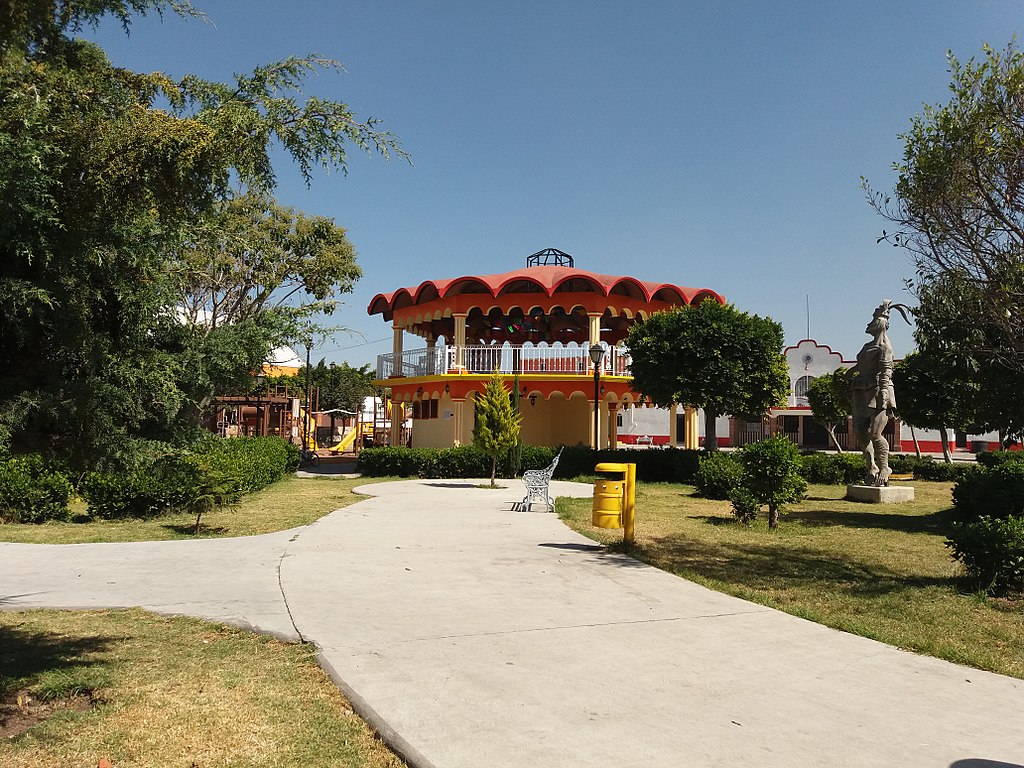
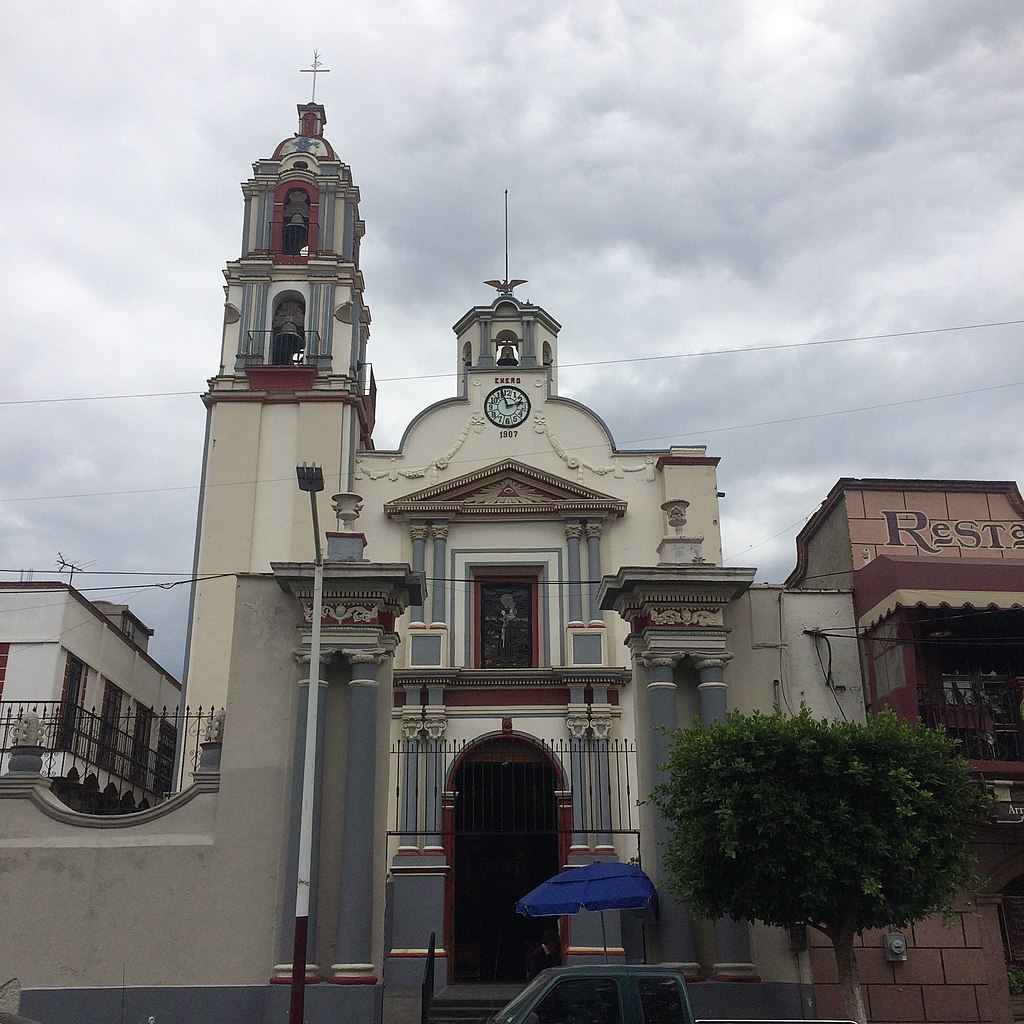
A Brief History of Texcoco de Mora, Mexico
The Paleontological Museum in Tocuila displays part of one of the richest deposits of Late Pleistocene fauna in the Americas, found in an ancient river mouth that used to flow into Lake Texcoco. While there is no exact date for the first human settlements in Texcoco, it is likely that the first people here were Toltec or from Teotihuacan. The Xototl, Tolotzin, and Quinatzin Codices indicate that the first people here were ethnically Chichimeca. This tribe is credited for founding a province known in the pre-Hispanic Valley of Mexico as Acolhuacan.
Hernán Cortés initially arrived to Texcoco in 1519, while Cacamatzin was leader. Here the brigantines to attack Tenochtitlan were constructed in 1521. On Juárez Street there is an obelisk that marks this event. After the Spanish conquest of the Aztec Empire, Franciscan friars came to Texcoco to evangelize, principally Juan de Tecto, Juan de Ayora and Pedro de Gante. Gante founded the first primary school in Mesoamerica, teaching Latin, Spanish, sewing, carpentry, and knitting. He also wrote the first catechism in Nahuatl. In the north of the Texcoco cathedral, there is a chapel named after him.
In 1551, indigenous leader Fernando Pimentel y Alvarado petitioned to have Texcoco recognized as a city by the Spanish Crown. This petition was granted and it received a coat of arms. While the overall style of the coat of arms is Spanish, the emblems inside, such as a coyote and a warrior with a headdress are Aztec. In the very early colonial period, Texcoco was the second most important city in New Spain.
Despite its initial importance, Texcoco did not develop as a major city like some of its neighbors during the colonial period and for much of the post-independence period. It was most important for fishing and agriculture. From 1827 to 1830, Texcoco was the second capital of the State of Mexico, until it was moved to San Agustín de las Cuevas, today Tlalpan. Texcoco became the head of one of the districts of Mexico State in 1837. The appendage of “de Mora” was added in 1861 and by 1919, it became a modern municipality.
In 2003, archeologists sponsored by the National Geographic, the University of Michigan, and the Universidad Autónoma de Chapingo discovered a number of pre-Hispanic artifacts in an area that has been proposed for building an airport. The finds are at areas that are or were the shores of Lake Texcoco were and the decline in the water tables over the centuries. Some of the pieces found include ceramics, utensils, and ceremonial objects.
Tourism in Mexico City, Mexico
Texcoco de Mora is a suburb of Mexico City and a destination for many foreign tourists. The area is known for the Templo Mayor (a 13th-century Aztec temple), the baroque Catedral Metropolitana de México of the Spanish conquistadors, and the Palacio Nacional, which houses historic murals by Diego Rivera.
Diego Rivera and his wife Frida Kahlo lived in Coyoacán, where several of their homes, studios, and art collections are open to the public. The house where Leon Trotsky was initially granted asylum and finally murdered in 1940 is also in Coyoacán. In addition, there are several haciendas that are now restaurants, such as the San Ángel Inn, the Hacienda de Tlalpan, Hacienda de Cortés and the Hacienda de los Morales.
The most recognizable icon of Mexico City is the golden Angel of Independence on the wide, elegant avenue Paseo de la Reforma, modeled by the order of the Emperor Maximilian of Mexico after the Champs-Élysées in Paris. This avenue was designed over the Americas’ oldest known major roadway in the 19th century to connect the National Palace (seat of government) with the Castle of Chapultepec, the imperial residence. Today, this avenue is an important financial district in which the Mexican Stock Exchange and several corporate headquarters are located.
Chapultepec Park houses the Chapultepec Castle, now a museum on a hill that overlooks the park and its numerous museums, monuments, the national zoo, and the National Museum of Anthropology (which houses the Aztec Calendar Stone). Another piece of architecture is the Palacio de Bellas Artes, a white marble theater/museum whose weight is such that it has gradually been sinking into the soft ground below.
The city has about 170 museums and is among the top ten cities in the world with the highest number of museums, over 100 art galleries, and over 30 concert halls, all of which maintain a constant cultural activity during the whole year.
The Cuisine of South-Central Mexico
The main feature of South-Central Mexican cooking is that it has been influenced by those of the other regions of Mexico, as well as a number of foreign influences. This region has been the center of power and trade throughout the Americas long before the Europeans discovered the New World. Most of the ingredients of this area’s cooking are not grown here but imported from all over.
Street cuisine is very popular, with taco stands, and lunch counters on every street. Popular foods in the city include barbacoa (a specialty of the central highlands), birria (from western Mexico), cabrito (from the north), carnitas (originally from Michoacán), mole sauces (from Puebla and central Mexico), tacos with many different fillings, and large sub-like sandwiches called tortas, usually served at specialized shops called ‘Torterías’. This is also the area where most of Mexico’s haute cuisine can be found. There are eateries that specialize in pre-Hispanic food, including dishes with insects.
– Featured Restaraunt –
Del Tingo al Tango
C. Abasolo 102-Int 3, El Carmen, 56160 Texcoco, Méx., Mexico
Telephone: +52 595 954 3636
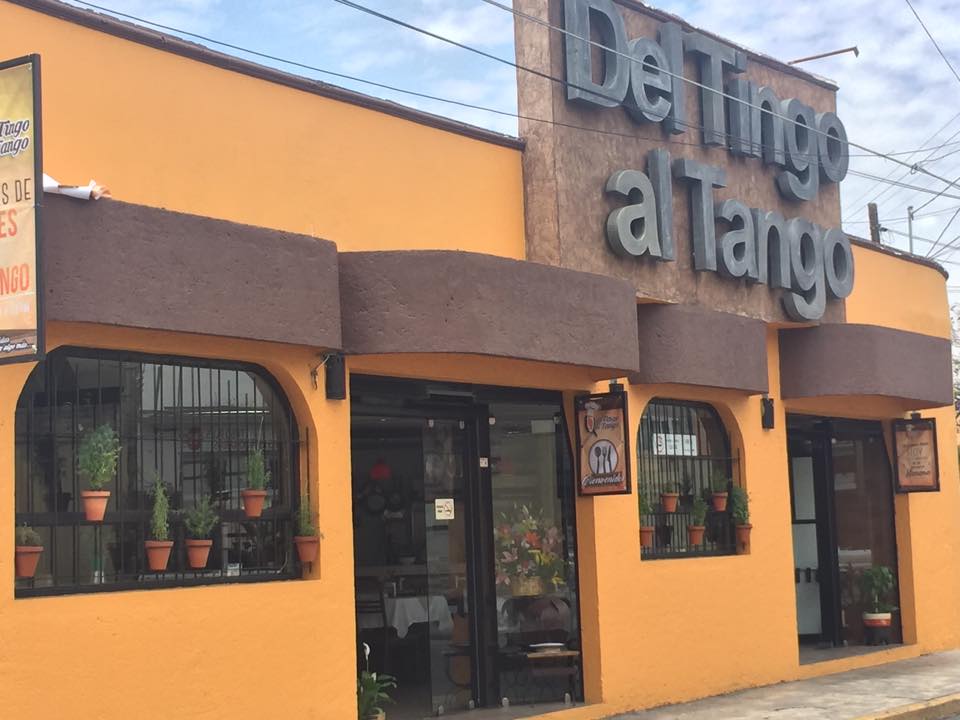
We are a family business with more than 15 years in the gastronomic business. Our mission is to promote traditional Mexican food and offer a warm atmosphere, and fresh food prepared at the moment.
How to Make This Recipe for Green Tomatillo Sauce
Salsa verde is really easy to make from scratch, all you need are tomatillos, onion, jalapeño, garlic, and cilantro. To cook the tomatillos, onion, jalapeño, and garlic, you can either roast them in the oven or brown them on the stovetop.
What You Need to Make Tomatillo Salsa Verde
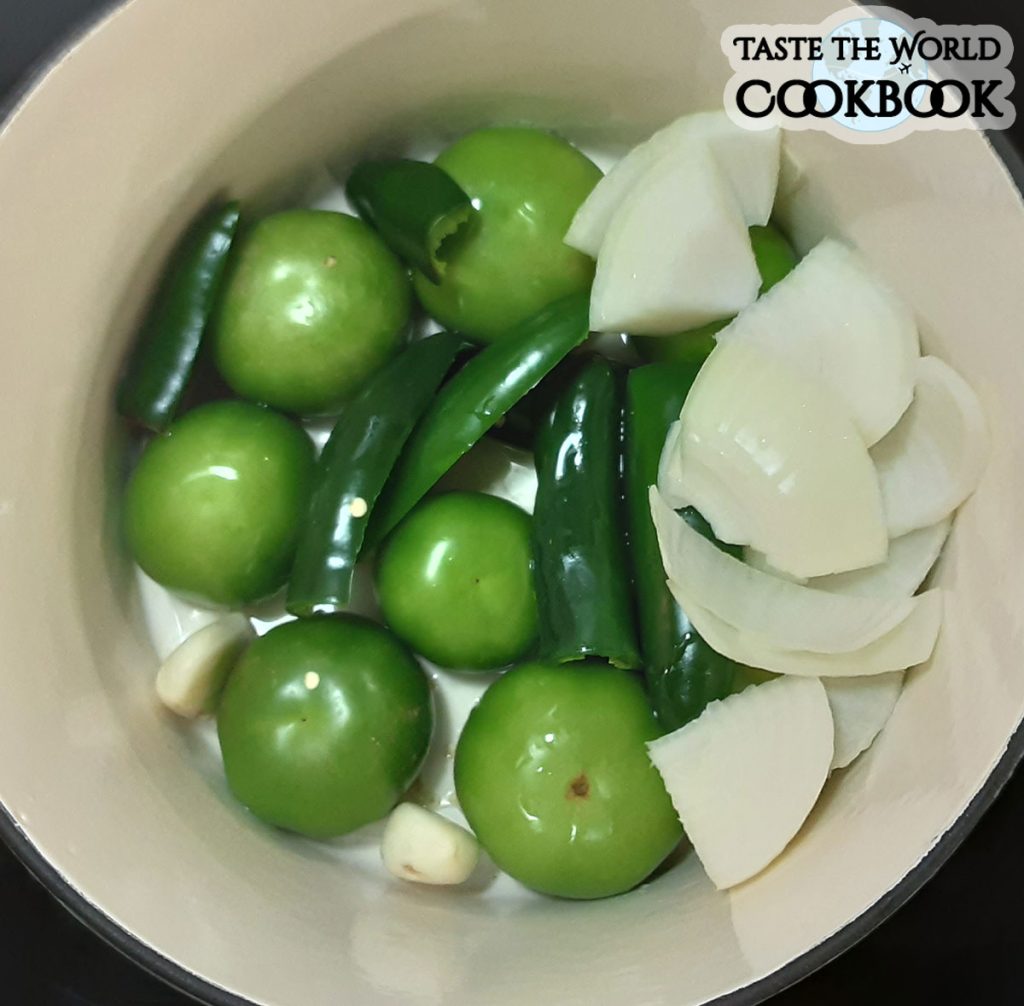
Ingredients
- 5 tomatillos
- ¼ yellow onion
- 3 jalapeño peppers
- 1 tbsp olive oil
- 2 cloves garlic
- ¼ bunch fresh cilantro finely chopped
- 1 tsp salt
How to Cook Green Tomatillo Sauce
Cooking Directions
- Saute the Vegetables
Slowly saute the tomatillos, the onion, and the jalapenos in a preheated saucepan with some olive oil for 5 minutes.
- Add the Garlic
After 5 minutes, add the garlic cloves and continue cooking until the tomatillos are slightly browned.
- Blend the Vegetables
Remove from the heat and blend the ingredients with the cilantro and salt in a blender. If you want a thinner consistency, add a small amount of water.
- Cook the Mix
Return the mix to the pan and cook on high for another minute or two.
- Remove and Cool
Remove it from the heat and let cool before serving.
Don’t over-process the salsa verde. You want it to be slightly chunky and have a good texture!
If you liked this dish please Rate This Recipe and leave a comment.
Tomatillo Salsa Verde
Please Rate this Recipe
Ingredients
- 5 tomatillos
- ¼ yellow onion
- 3 jalapeño peppers
- 1 tbsp olive oil
- 2 cloves garlic
- ¼ bunch fresh cilantro finely chopped
- 1 tsp salt
Instructions
- Slowly saute the tomatillos, the onion, and the jalapenos in a preheated saucepan with some olive oil for 5 minutes.5 tomatillos, ¼ yellow onion, 3 jalapeño peppers, 1 tbsp olive oil
- After 5 minutes, add the garlic cloves and continue cooking until the tomatillos are slightly browned.2 cloves garlic
- Remove from the heat and blend the ingredients with the cilantro and salt in a blender.¼ bunch fresh cilantro, 1 tsp salt
- If you want a thinner consistency, add a small amount of water.
Nutrition
Other Recipes That Go Well With
Photo Credits:
- By Taste The World Cookbook – Copyright 2022 All rights reserved.
- By Del Tingo al Tango – By https://www.facebook.com/DelTingoAlTangoTex/
- https://commons.wikimedia.org/wiki/File:Texcoco_centro_San_antonio_de_Padua_Parroquia.jpg
- https://commons.wikimedia.org/wiki/File:Delegaci%C3%B3n_Municipal_de_Tocuila_Texcoco_Mexico-20171118-crop.jpg
- https://commons.wikimedia.org/wiki/File:Iglesia_catolica-Tocuila_Texcoco_Mexico.JPG
- https://commons.wikimedia.org/wiki/File:Jardin_con_Mamut_Texcoco_Mexico-20171118.jpg
- https://commons.wikimedia.org/wiki/File:Kiosko_de_Tocuila_Texcoco_Mexico-20171118.jpg

